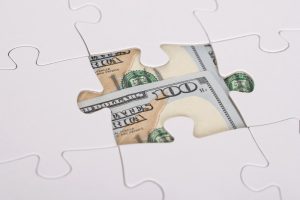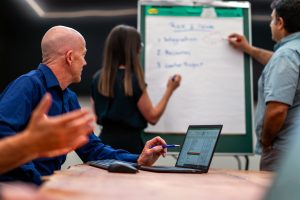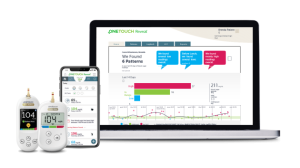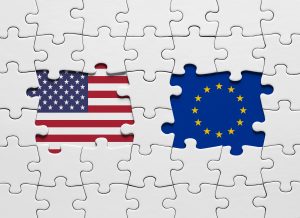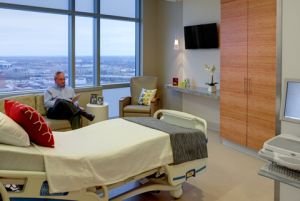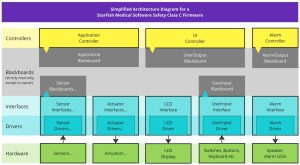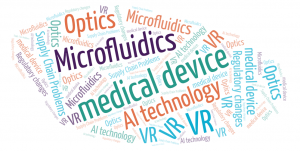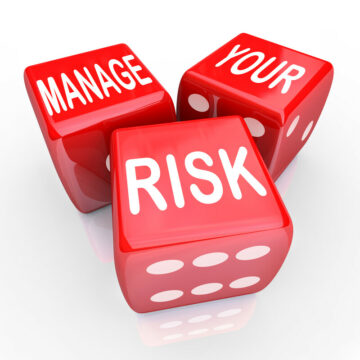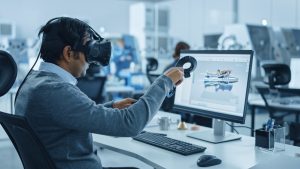
How VR design tools can improve product development
VR is one of the hottest trending tools in Industrial Design. Whether on social media or at conferences, designers are talking about how they use VR in the design process. In fact, we wrote about how VR can change Medical Device Design – XR is about to Revolutionize Medical Device Design.
When it comes to generating, visualizing, and evaluating concepts, designers have multiple VR tools at their disposal. But how does VR stack up to conventional methods in sketching and CAD? If you would like to know the answer, keep reading.
During the design process, designers commonly use sketching to quickly generate and visualize concepts. Sketching in Industrial Design is the communication of a 3D volume (design of a product) on a 2D surface (paper). The fact that a sketch is captured on a 2D surface means it can only be drawn from one viewpoint. This limitation has advantages. It allows a designer to focus on a few aspects of a concept without having to worry about how they relate to the whole form. This also makes it faster to generate sketch concepts.
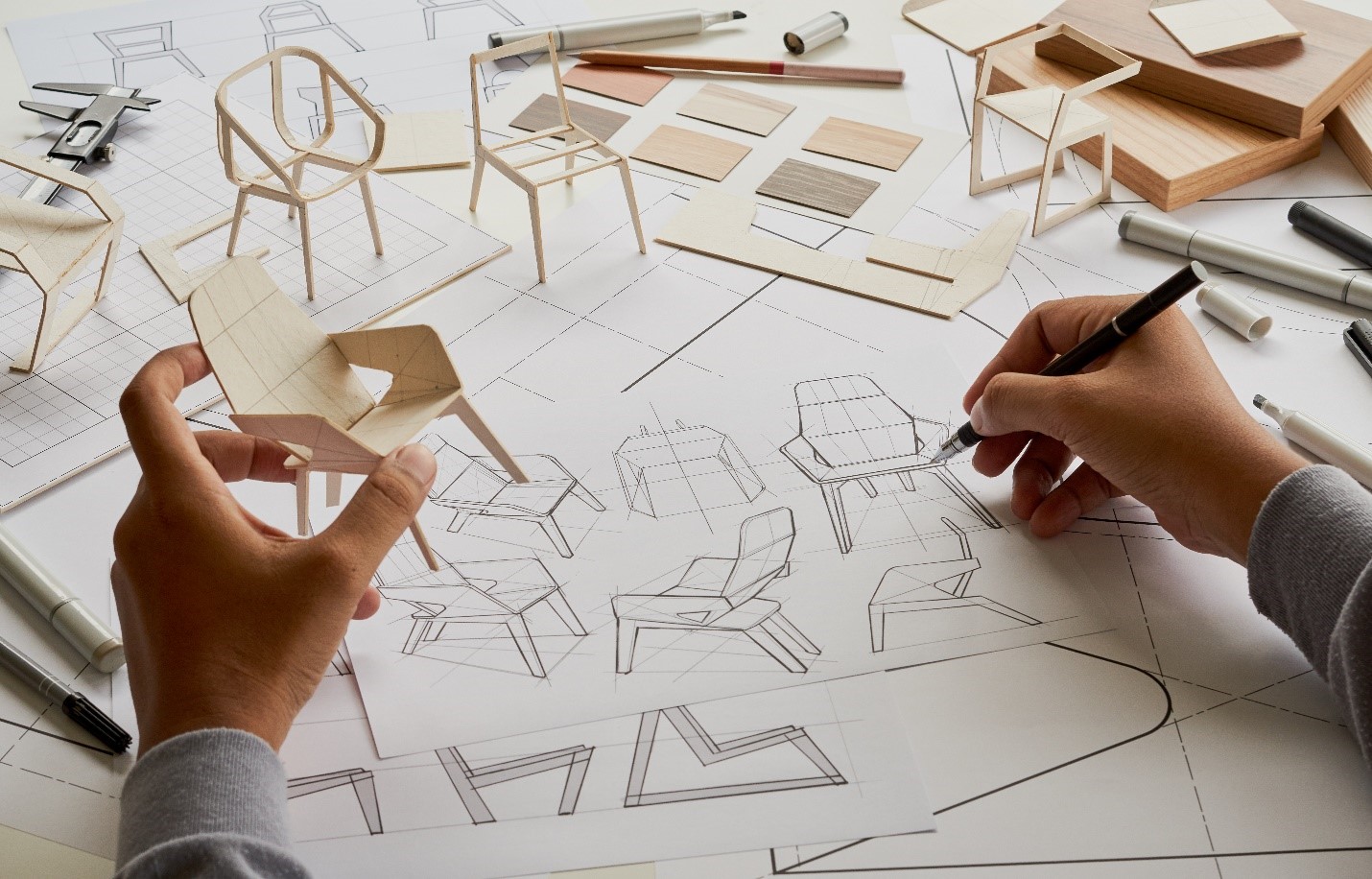
Sketch of a chair design from the front view, side view or three-quarter view

Sketching in VR creates 3D structure directly
3D Form
Sketching is faster because less details are shown or even known, which is a disadvantage when it comes time to developing the form in 3D. Sketches do not show how a form in one viewpoint will translate and look in another viewpoint. That is left to what the designer thinks the form will look like as opposed to what the form will actually look like in real life. Until VR, a designer would need to create a CAD model to see and understand the entire 3D form.
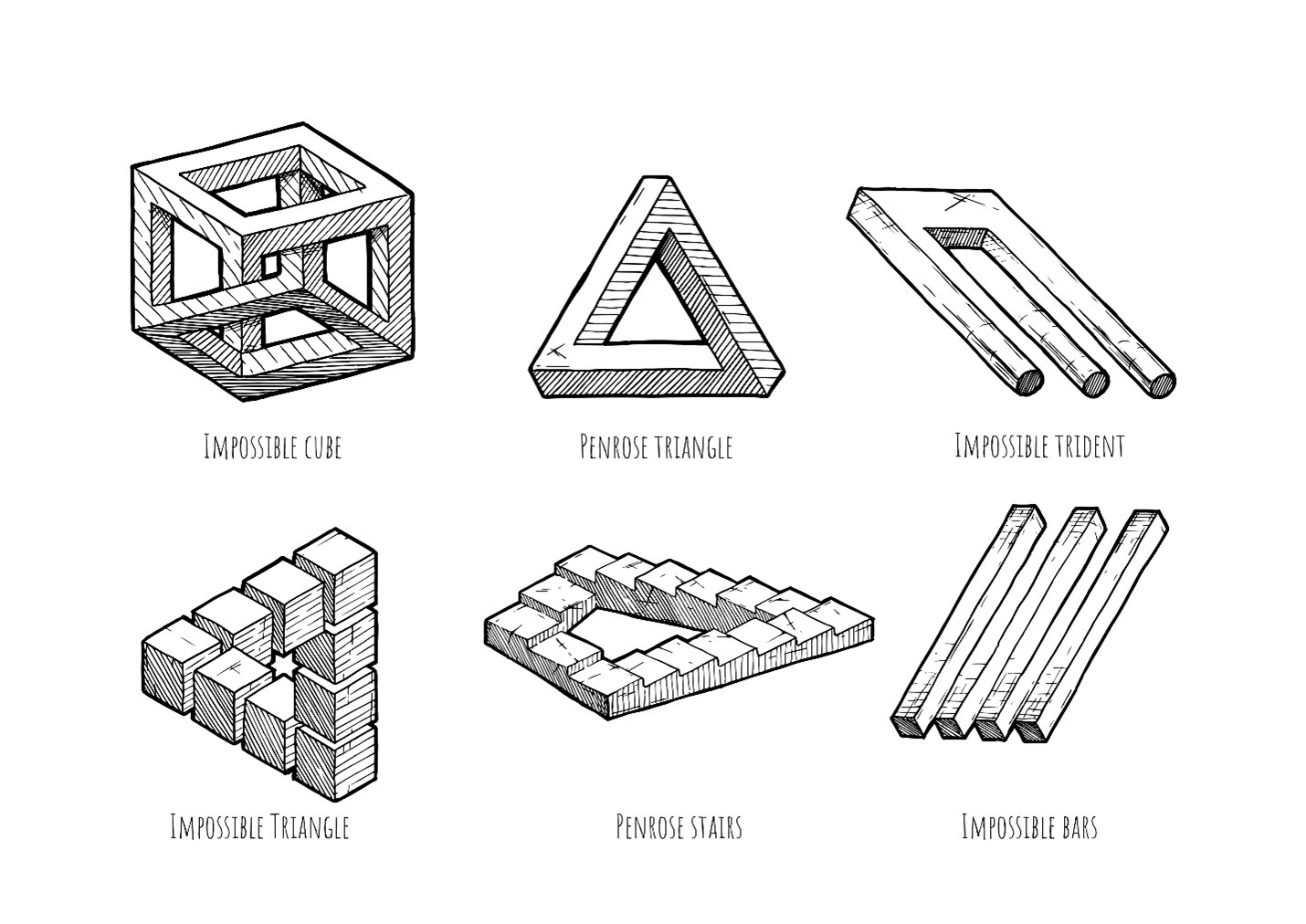
It is easy to draw something that is not physically possible
Rather than drawing on a canvas, designers sketching in VR, draw in the canvas. By sketching in VR, a designer can create and view the sketch as a 3D volume. It may take longer to generate different concepts, but a designer can immediately see the implication of how a form appears from all viewpoints. It is a more holistic way to develop 3D forms. There is also the added benefit that sketches in 3D are more resolved and therefore can be easier to transition to CAD.
Real Life Perspective
Another element in sketching is perspective. Designers use perspective to show how close or far away an object is to the viewer. Essentially, it gives a sketch depth. It is also used to communicate emotion. When designers use a dramatic perspective while sketching a car, for example, it makes the car appear muscular and strong. This dramatic perspective might be good to sell the dream, so to speak, but it’s not good for evaluating how a design will actually look and feel in real life.

The car looks different depending on the perspective (the distance between the object and the viewer)
In contrast, VR is never exaggerated. It shows a perspective based on our distance to the objects. When a designer uses VR to design, they experience sketches and CAD models similar to how the end user will experience them. In this way, the design can be more accurately evaluated because it’s a representation of how the design will be experienced in real life.
Accurate Scale
When developing and evaluating concepts, scale is an under discussed but essential part of concept development. Unless the designer sketches at 1:1 scale, it is shown as an estimate in sketches. The challenge is being able to evaluate if the dimensions and scale feel right for human use. A 3D environment will always produce a better sense of scale. Traditionally this meant building a mock-up or prototype in 1:1 scale to see if the dimensions felt right with bodily experience. This is where VR really shines as it mimics working in 3D environment. It provides a way to check if the scale of our VR sketches or CAD are on the right track. Designers can jump into VR and walk around the sketch or CAD to evaluate the design from different distances and angles.
Ergonomics and Environment
This is especially helpful for products with direct human interaction as a designer can evaluate ergonomics. For example, if a product has a handle, it could be imported into VR as a separate part and be moved to a location that felt right in VR. How a product relates to its context is another important aspect of product development. In VR, the environment can be built around the product so that designers and other stakeholders can experience and evaluate how the product and environment interact with each other. Products such as cart based medical devices in a high traffic area can benefit significantly through ergonomic and environmental study.

Designing with human scale models
While there is a lot of hype around VR tools for designers, there are areas in the design process where it excels. These are instances such as sketching in 3D to fully understand the form, understanding scale and experiencing our concepts in a 3D environment so that we can evaluate and iterate faster.
Have you tried VR yet?
Morna Gamblin is an Industrial Designer at StarFish Medical who holds a Bachelors of Industrial Design with Honors from Humber College. She has 14 years of experience working in consumer product design. Morna has taught a variety of courses in Industrial Design at the college level and enjoys making videos for her youTube channel called Design plus Morna. She is currently on the board of ACIDO (Association of Chartered Industrial Designers of Ontario) where she is the Membership Director.
Sunghyun Lee is a Junior Industrial Designer at StarFish Medical. Sunghyun studied Industrial Design at Carleton University and is interested in adopting new technology to help answer design problems more effectively.
[embedded content]
- SEO Powered Content & PR Distribution. Get Amplified Today.
- Platoblockchain. Web3 Metaverse Intelligence. Knowledge Amplified. Access Here.
- Source: https://starfishmedical.com/blog/do-vr-design-tools-live-up-to-the-hype/
- 1
- 2D
- 3d
- a
- Able
- About
- accurately
- actually
- added
- Adopting
- advantages
- All
- allows
- always
- and
- Another
- answer
- appear
- AREA
- areas
- around
- aspect
- aspects
- Association
- based
- because
- being
- benefit
- Better
- between
- board
- Building
- built
- CAD
- called
- canvas
- car
- Chair
- challenge
- change
- Channel
- Chartered
- check
- Close
- College
- COM
- commonly
- communicate
- Communication
- concept
- concepts
- conferences
- consumer
- content
- context
- contrast
- conventional
- could
- courses
- create
- creates
- Currently
- Depending
- depth
- Design
- design process
- Designer
- designers
- details
- develop
- developing
- Development
- device
- Devices
- different
- dimensions
- direct
- Director
- Disadvantage
- discussed
- distance
- dramatic
- drawing
- drawn
- dream
- each
- easier
- effectively
- embedded
- Entire
- Environment
- environmental
- especially
- essential
- essentially
- estimate
- evaluate
- evaluated
- Even
- example
- experience
- experienced
- experiencing
- faster
- few
- Focus
- form
- forms
- from
- front
- fully
- generate
- generating
- gif
- gives
- good
- handle
- having
- help
- helpful
- High
- holds
- holistic
- hottest
- How
- HTTPS
- human
- Hype
- immediately
- important
- important aspect
- improve
- in
- industrial
- interact
- interaction
- interested
- IT
- jump
- Keep
- Know
- known
- Lee
- Level
- Life
- limitation
- live
- location
- longer
- Look
- look like
- LOOKS
- Lot
- MAKES
- Making
- max-width
- means
- Media
- medical
- medical device
- medical devices
- membership
- methods
- might
- model
- models
- more
- multiple
- Need
- New
- object
- objects
- ONE
- Ontario
- opposed
- Other
- Paper
- part
- perspective
- Physically
- plato
- Plato Data Intelligence
- PlatoData
- player
- plus
- problems
- process
- produce
- Product
- product design
- product development
- Products
- prototype
- provides
- quickly
- Reading
- real
- real life
- representation
- resolved
- revolutionize
- Scale
- sell
- sense
- Share
- show
- shown
- Shows
- significantly
- similar
- Simple
- So
- Social
- social media
- something
- speak
- stack
- stakeholders
- strong
- structure
- studied
- Study
- such
- Surface
- Take
- talking
- Technology
- The
- their
- therefore
- Thinks
- Through
- time
- to
- tools
- track
- traditionally
- traffic
- transition
- translate
- trending
- under
- understand
- understanding
- university
- use
- User
- variety
- Video
- Videos
- View
- volume
- vr
- VR Design
- vr tools
- What
- whether
- which
- while
- WHO
- will
- without
- working
- would
- years
- youtube
- zephyrnet

